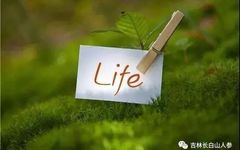To fully understand our Northeast specialty, you can click⇨ the official WeChat store⇦ for more details!
It is widely said that “if you don’t take care of your health now, you’ll have to take care of doctors later.” When it comes to health maintenance, ginseng, known as the “King of Tonics,” “King of Herbs,” and “King of Medicines,” naturally comes to mind.
However, when we go to the market to buy ginseng, we often find ourselves confused by the various names, ultimately not knowing which ginseng to purchase.
Therefore, to help everyone better understand ginseng, recognize its types, and choose the right one for themselves, today we will discuss the various classifications of ginseng.
1. By Country of Origin: Three Main Types
Changbai Mountain Ginseng: The primary production area of ginseng in China is the Northeast region, with the highest quality ginseng coming from the Changbai Mountain area, making it synonymous with Chinese ginseng.
Western Ginseng: Western ginseng includes two types: one from the United States, known as American ginseng (Huang Qi), primarily produced in the forests of Wisconsin, and another from Canada, known as Canadian ginseng, produced in the forests of Montreal and Quebec. Together, they are referred to as Western ginseng.
Korean Ginseng: Korean ginseng is mainly produced in the Myohyang Mountains of South Korea and Kaesong in North Korea, also known as Korean ginseng (Chao Xian Shen). There are also two smaller varieties from Japan and Russia, known as Eastern ginseng and Russian ginseng.
2. By Growth Environment: Four Main Types of Ginseng
Wild Ginseng: Wild ginseng grows in a natural environment without any human interference, characterized by seeds that are naturally dispersed. It is referred to as “pure goods” (essentially unavailable for purchase).
Forest Ginseng: Forest ginseng refers to ginseng seeds that are planted in the wild under forest cover and allowed to grow naturally for several years, often referred to as “seed goods” or “forest seeds.”
Transplanted Ginseng: There are two types of transplanted ginseng: “home transplant” and “mountain transplant.” Home transplant refers to seedlings from cultivated ginseng that are moved to the mountains to grow naturally, while mountain transplant involves moving wild ginseng seedlings to nearby forest areas for natural growth.
Garden Ginseng: This refers to ginseng cultivated in specially prepared beds, managed entirely by humans, also known as “cultivated ginseng.” Due to its high yield and large size, it is sold by weight.

3. By Processing Method: Five Main Types of Ginseng
Raw Dried Ginseng: This is ginseng that has been dried or sun-dried, known as “raw dried ginseng.” If the roots are kept intact, it is called “whole root raw dried ginseng.” If the raw material is wild ginseng, it is referred to as “raw dried wild ginseng,” but if the skin is removed, it becomes “white dried ginseng.”
Red Ginseng: Red ginseng is made by cleaning fresh ginseng, steaming it, and then drying it, resulting in a processed product known as red ginseng.
Fresh Ginseng: This refers to ginseng that has been processed using preservation techniques.
Sugar Ginseng and Honey Ginseng: This type of ginseng is made by cleaning fresh ginseng, then “frying” it in hot water for 20 minutes, followed by puncturing it with needles and injecting sugar syrup into the ginseng before drying it. If honey is used instead of sugar, it becomes honey ginseng.
Craft Ginseng: This refers to ginseng that has been glued together using adhesive, where the length of the ginseng root indicates its age, so care should be taken when purchasing.
4. By Cultivation Method: Three Common Types
Edge Ginseng: Edge ginseng has the same seeds and growing environment as regular ginseng but differs in three main ways. First, it has a growth period of 7 to 9 years, while regular ginseng grows for only 4 to 6 years. Second, edge ginseng undergoes two transplants, with shaping of the roots, while garden ginseng only undergoes one transplant without any shaping. Third, edge ginseng seedlings are classified during transplanting, leading to a higher price than regular ginseng.
Column Ginseng: Known as the “crown of cultivated ginseng,” it must grow for at least 10 years and is divided into “seed ginseng” and “seedling ginseng,” but once it lies down, it is not moved until harvest.
Laid Ginseng: Laid ginseng must meet two criteria: it must grow in two different environments and undergo at least one transplant; once laid down, it is not fertilized or treated with medicine, allowing it to grow naturally until harvest.
This concludes the classification of ginseng. I believe this information will be useful when choosing ginseng, so remember to like, save, and share this to help your friends understand this precious medicinal herb—ginseng.
If you have any questions about Changbai Mountain ginseng, feel free to contact us for more detailed answers.
↓↓ Long press the image below to identify↓↓


- What are the medicinal effects of Changbai Mountain ginseng? A detailed explanation of ginseng’s medicinal properties.
- Why is wild ginseng so expensive, with prices exceeding 100,000 per piece?
- What does ginseng look like? Discover the appearance of Changbai Mountain ginseng.
- How to prepare fresh ginseng for liquor? Methods for soaking fresh ginseng in liquor.
- What is the price of ginseng? Understanding the pricing of Changbai Mountain ginseng.

